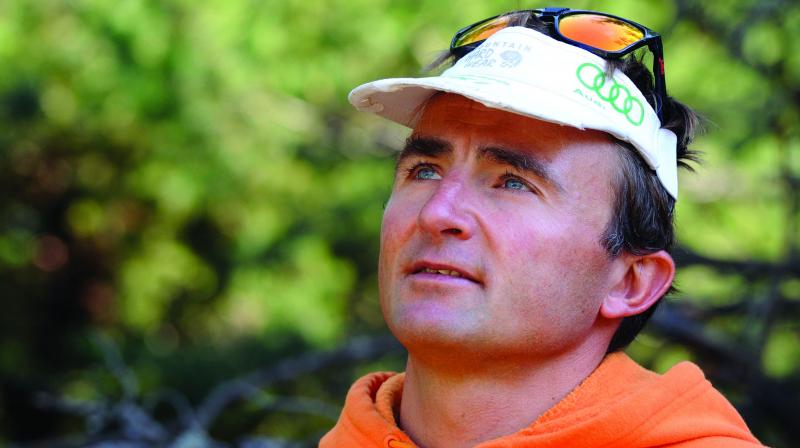Swiss climber on tough route to Everest killed

Kathmandu: Swiss climber Ueli Steck, one of the most feted mountaineers of his generation and famed for his speed ascents of iconic Alpine routes, died on Mount Everest on Sunday, officials said.
“Today morning, he had an accident on the Nuptse wall and died. It seems he slipped,” Ang Tsering Sherpa, head of the Nepal Mountain-eering Association, said.
Steck, 40, was on Everest to acclimatise before attempting in May to summit the world’s tallest peak followed by neighbouring Lhotse, connecting a series of ridges in a never before climbed route.
Everest and neighbouring peak Nuptse share a common ridge, which is where Steck apparently slipped and fell, according to a government official. “He skidded off about 1,000 metres from (Mt Nuptse) camp two early morning on Sunday. Other climbers ascending Everest saw him and asked for his rescue,” said Dinesh Bhattarai, director general at the Department of Tourism.
Steck was climbing alone when he died, after his partner, Tenji Sherpa, sustained severe frostbite and was recovering at a lower camp.
The accomplished alpi-nist sought to pioneer new routes throughout his mountaineering career, earning the nickname “the Swiss Mac-hine” for his solo record ascents in the Alps.
He was attempting to achieve another first this year by connecting a series of rarely climbed routes to summit both Everest and Lhotse, the world’s fourth highest mountain, all without the use of supplemental oxygen. Steck was due to summit Everest via the West Ridge — a route that has recorded more fatalities than summits — before climbing Lhotse.
In a video recorded in early April and posted on YouTube, Steck said he would judge the attempt a success regardless of whether he reached the top — as long as he returned alive.
Steck made global headlines in 2013 when he and two other Western climbers traded blows with a group of furious Nepali guides over a climbing dispute on Mount Everest. The brawl shocked the mountaineering community, causing a damaging rift between Western climbers and the often lowly-paid Nepali guides who are essential for commercial expeditions to the crowded summit.
An angry Steck swore never to return to Everest, telling a Swiss website that his “trust (was) gone”.
But he was back in the Himalayas only months later, this time to scale Mount Annapurna, the world’s tenth highest peak, via its steep Southface wall.

